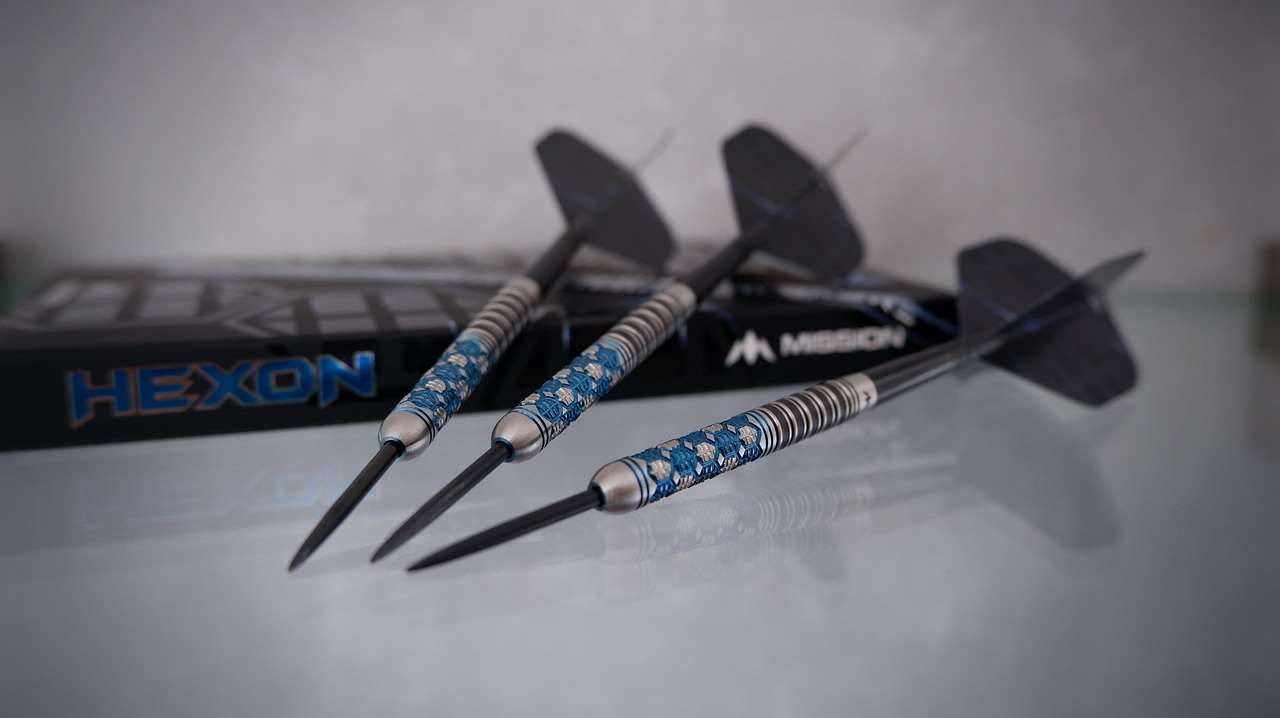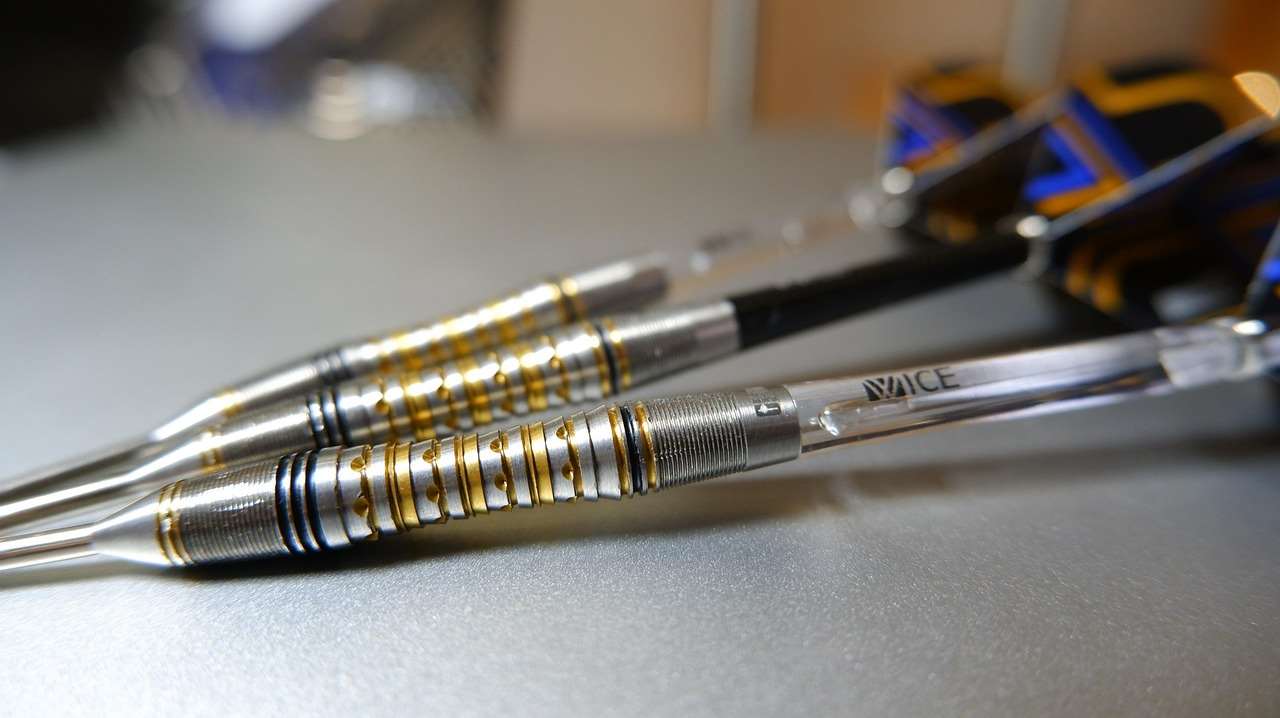To **aim darts** accurately, you need a consistent stance, grip, and release; this article will teach you the fundamentals of these elements to help you improve your game and consistently hit your target. We’ll cover everything from stance and grip techniques to mental focus and practice drills, giving you the tools you need to **aim darts** like a pro.
⚠️ Still Using Pen & Paper (or a Chalkboard)?! ⚠️
Step into the future! The Dart Counter App handles all the scoring, suggests checkouts, and tracks your stats automatically. It's easier than you think!
Try the Smart Dart Counter App FREE!Ready for an upgrade? Click above!
Mastering the Stance to Aim Darts Accurately
Your stance is the foundation upon which your entire darting game is built. A stable and balanced stance allows for consistent body positioning and reduces unwanted movement during your throw. There are three main stances commonly used by dart players:
- Front-on stance: This involves standing directly facing the dartboard. It provides a clear and unobstructed view of the target.
- Side-on stance: This stance involves standing perpendicular to the dartboard, with your throwing arm side facing the board. It can offer more stability for some players.
- Angled stance: A hybrid of the front-on and side-on stances, this involves standing at a slight angle to the board. This is a good compromise for many players.
Experiment with each stance to find the one that feels most comfortable and allows you to maintain balance throughout your throw. The key is to ensure your weight is evenly distributed and that you are not leaning too far forward or backward. Remember, consistency is key when it comes to your stance.

Fine-Tuning Your Stance for Optimal Aim
Once you’ve chosen your preferred stance, pay attention to these details:
- Foot placement: Place your front foot (for right-handed players) or your left foot (for left-handed players) close to the oche (the throwing line). The back foot should be positioned slightly behind, providing balance.
- Body alignment: Ensure your body is aligned with the target. Your throwing shoulder should be pointing directly at the dartboard.
- Head position: Keep your head still and your eyes focused on the target. Avoid tilting or moving your head during your throw.
Regular practice with a focus on maintaining a consistent stance will significantly improve your accuracy and ability to **aim darts** effectively.
The Perfect Grip for Precise Dart Throwing
The grip you use on your dart has a direct impact on your control and accuracy. There is no single “perfect” grip, as it’s largely a matter of personal preference. However, there are some general principles to keep in mind.
- Consistency: The most important aspect of your grip is that it’s consistent. You should grip the dart the same way every time you throw.
- Pressure: Avoid gripping the dart too tightly, as this can cause tension and reduce control. A relaxed grip allows for a smoother release.
- Finger placement: Experiment with different finger placements to find what feels most comfortable and gives you the best control.
Many players use a three-finger grip, with the thumb, index finger, and middle finger controlling the dart. Some players prefer a four-finger grip, while others use only two fingers. The best grip is the one that feels natural to you and allows you to **aim darts** with confidence.

Grip Variations and Their Impact on Aim
Different grip variations can affect the trajectory and spin of your dart. Here are a few common variations:
- High grip: Gripping the dart closer to the front can increase control and reduce wobble.
- Low grip: Gripping the dart closer to the back can generate more power and a higher arc.
- Pencil grip: Holding the dart like a pencil, with the fingers wrapped around the barrel, can provide a stable and consistent release.
Experiment with different grip variations to see how they affect your throw. Pay attention to how the dart feels in your hand and how it flies through the air. Over time, you’ll develop a grip that is perfectly suited to your throwing style. Proper setup including dartboard instructions are critical before starting your game.
The Throw: Release and Follow-Through
The release and follow-through are the final pieces of the puzzle when it comes to **aim darts** with precision. A smooth and controlled release is essential for consistent accuracy. Here’s a breakdown of the key elements:
- Smooth motion: Your throwing motion should be smooth and fluid, from the pullback to the release. Avoid jerky or abrupt movements.
- Release point: Focus on releasing the dart at the same point in your throwing motion every time. Consistency is key.
- Follow-through: Complete your throwing motion with a full follow-through. This helps maintain accuracy and prevents you from pulling back too early.
Developing a Consistent Release and Follow-Through
To develop a consistent release and follow-through, focus on these exercises:
- Mirror practice: Practice your throwing motion in front of a mirror to observe your form and identify any inconsistencies.
- Slow-motion practice: Practice your throw in slow motion, paying close attention to each stage of the motion.
- Target practice: Focus on hitting specific targets on the dartboard, such as the bullseye or the treble 20.
By practicing your release and follow-through consistently, you can develop muscle memory and improve your accuracy over time. Learning about dart tips can also help improve your throwing style.
Mental Focus and Visualization Techniques
While physical technique is crucial, mental focus is equally important for success in darts. The ability to stay calm and focused under pressure can make all the difference. Here are some mental techniques to help you **aim darts** more effectively:
- Visualization: Before each throw, visualize the dart hitting the target. Imagine the trajectory of the dart and the feeling of success.
- Positive self-talk: Replace negative thoughts with positive affirmations. Believe in your ability to hit the target.
- Breathing exercises: Practice deep breathing exercises to calm your nerves and reduce anxiety.
Mental focus is a skill that can be developed with practice. By incorporating these techniques into your training routine, you can improve your mental toughness and perform at your best under pressure.

Dealing with Pressure and Distractions
During a game, you will inevitably face pressure and distractions. Here are some strategies for dealing with them:
- Focus on the process: Instead of focusing on the outcome, focus on the process of throwing the dart. Concentrate on your stance, grip, and release.
- Ignore distractions: Block out distractions by focusing on your breathing and your visualization.
- Take a break: If you’re feeling overwhelmed, take a short break to clear your head. Step away from the dartboard and take a few deep breaths.
By developing your mental resilience, you can overcome challenges and maintain your focus throughout the game. Make sure to use a Dart game scoring app to accurately track your progress.
Practice Drills to Improve Your Aim
Consistent practice is essential for improving your dart skills. Here are some effective practice drills to help you **aim darts** with greater accuracy:
- Around the clock: Start at the number 1 and work your way around the board, hitting each number in sequence. This drill improves your accuracy and consistency.
- Treble 20 challenge: Aim for the treble 20 multiple times in a row. This drill helps you develop accuracy and consistency when aiming for the highest-scoring target.
- Checkout practice: Practice different checkout combinations. This drill improves your mental calculation skills and your ability to finish legs quickly. You can learn about darts checkout explained in another article.
Remember to track your progress and set realistic goals. Celebrate your successes and learn from your mistakes. With dedication and consistent practice, you can significantly improve your dart game.

Vary Your Practice Routine
To keep your practice sessions engaging and effective, vary your routine. Try different drills, experiment with different grips and stances, and challenge yourself with new goals. A varied practice routine will help you develop a well-rounded skillset and prevent boredom.
- Focus on Weaknesses: Identify your weaknesses and dedicate extra practice time to improving them. For example, if you struggle with doubles, spend more time practicing double shots.
- Play Against Opponents: Regularly play against opponents of varying skill levels. This will help you develop your competitive skills and learn from others.
- Analyze Your Performance: After each practice session or game, analyze your performance. Identify areas where you excelled and areas where you need to improve.
Conclusion: Consistent Effort Drives Success
Improving your ability to **aim darts** is a journey that requires dedication, practice, and a willingness to learn. By mastering the fundamentals of stance, grip, throw, and mental focus, you can significantly enhance your accuracy and consistency. Remember to stay patient, track your progress, and celebrate your achievements along the way. With consistent effort and a positive attitude, you can unlock your full potential as a dart player. So grab your darts, step up to the oche, and start practicing! Your journey to becoming a more accurate dart thrower starts now. Why not explore our article on darts the pros use to further enhance your knowledge!
Hi, I’m Dieter, and I created Dartcounter (Dartcounterapp.com). My motivation wasn’t being a darts expert – quite the opposite! When I first started playing, I loved the game but found keeping accurate scores and tracking stats difficult and distracting.
I figured I couldn’t be the only one struggling with this. So, I decided to build a solution: an easy-to-use application that everyone, no matter their experience level, could use to manage scoring effortlessly.
My goal for Dartcounter was simple: let the app handle the numbers – the scoring, the averages, the stats, even checkout suggestions – so players could focus purely on their throw and enjoying the game. It began as a way to solve my own beginner’s problem, and I’m thrilled it has grown into a helpful tool for the wider darts community.